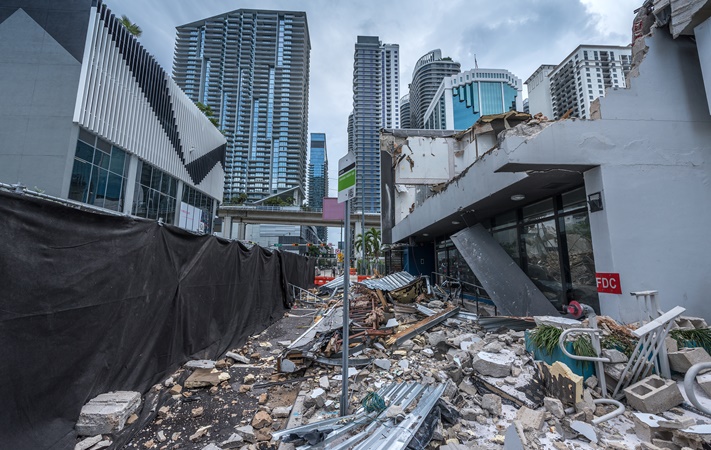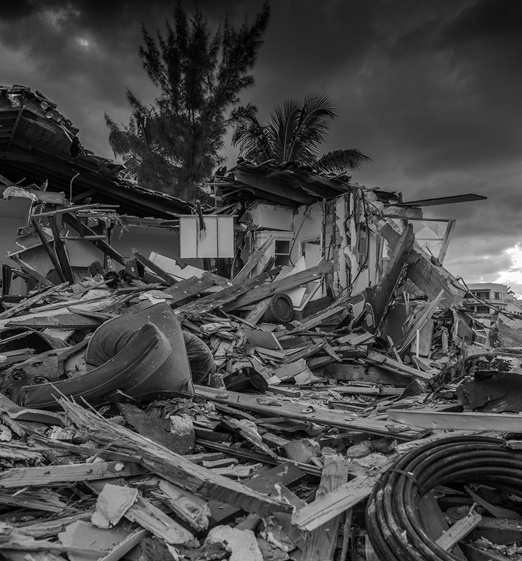Parametric Insurance Solutions

Parametric Insurance Solutions

Push the boundaries of traditional insurance with our parametric solutions
As the complexity of property risks evolves so rapidly, it's hard for traditional insurance to adapt.
Traditional property policies can leave gaps posed by disruption to a business due to wide-spread damage, loss of attraction, or impacted workforce, as well as the financial impact from deductibles, sub-limits, and exclusions. Parametric policies fill this gap and round out the risk transfer to cover the inevitable unknowns and unexpected.
Parametric insurance's recent popularity is expected to continue as exposures increase in complexity and outgrow traditional coverages.
At Amwins, we have extensive experience in structuring parametric solutions, as well as unmatched market knowledge and access. We partner with you to develop a structure that meets your client's unique needs and provides peace of mind and invaluable resources when you need them most.
How Does Parametric Insurance Work?
A parametric insurance policy pays based on pre-defined thresholds and characteristics of an event (i.e. “triggers”), such as windspeed, magnitude of seismic events, rainfall intensity, etc.
Step 1
Define Insurance Locations
Insured selects location parameters. It can be tied to the insured’s location(s) or other sites such as an important customers, critical suppliers, or key infrastructures.
Step 2
Determine Triggers and Payout Structure
Coverage triggers, including peril and measurement sources, and payout structure must be determined. Terms are unique based on the insured’s specific needs.
Step 3
Event and Payment
If an event occurs and meets or exceeds the trigger, the parametric policy pays according to the agreed payout function. Insureds follow a simplified “proof of loss” process to certify financial impacts.
The Main Benefits of Parametric Insurance Include:
Payout Flexibility
Parametric policies account for the circumstances around an event, rather than the actual losses incurred. The insured can use the proceeds however they see fit to cover any direct or indirect financial loss associated with the event.
Speed of Payout
Insurers use near real-time and publicly available data so claims can be paid quickly - often in a matter of weeks. This provides valuable cashflow, which may enable a business to recover faster from an event.
Transparency
The parametric contract predefines everything, so there’s no ambiguity over when, how, and how much the contract is going to pay out. This level of clarity and certainty is unmatched in the traditional market.
Exclusive Parametric Products
Peril-specific Solutions
Parametric insurance is a strong coverage option for a variety of perils. The following are top perils and provide a simplified example of what the trigger and structure could look like.



Wind
(Hurricane or named storm)
- Policy triggered when insured has a loss resulting from hurricane-strength wind.
- Payout based on maximum one-minute sustained wind speed at the insured’s defined location.
Earthquake
- Policy triggered when insured has a loss due to a ground-shaking event registering at the insured’s defined location.
Tornado
- Policy triggered when insured has a loss resulting from a tornado.
- Payout determined by percentage of insured’s property impacted by the tornado and at what EF rating.



Wildfire
- Policy triggered when insured has a loss resulting from a wildfire or smoke damage.
- Payout triggered once a wildfire enters a defined parcel boundary.
Hail
- Policy triggered when an insured has a loss resulting from hail damage.
- Payout determined by size of hailstones at insured’s defined location.
Flood
- Policy triggered when standing water is detected where it shouldn’t be.
- Payout determined by the depth of water and percentage of insured’s location impacted by the flood waters.
Peril-agnostic Solutions
For more information on a tailored parametric insurance policy through Amwins, please contact:
Explore Parametric resources + insights
Stay up to date on emerging industry trends and topics.





